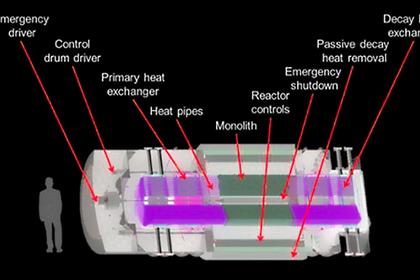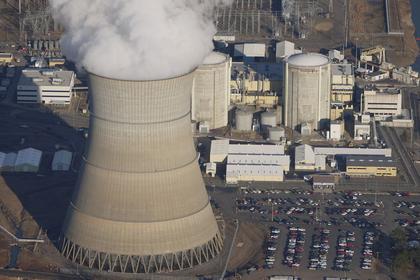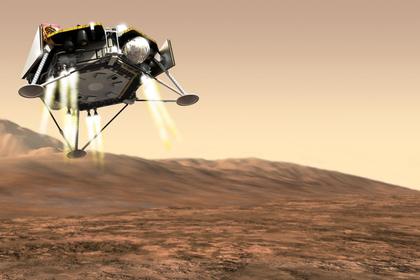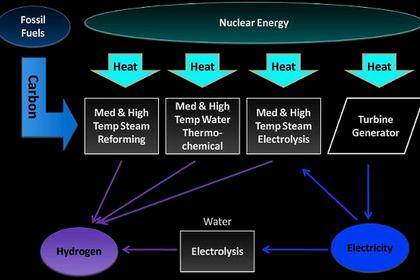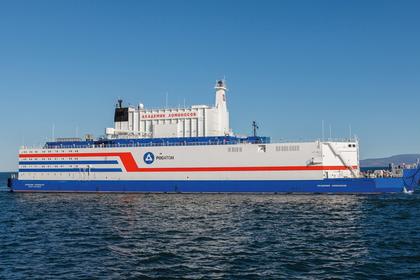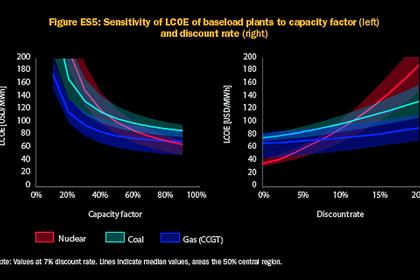
NUCLEAR PERSEVERANCE ON MARS
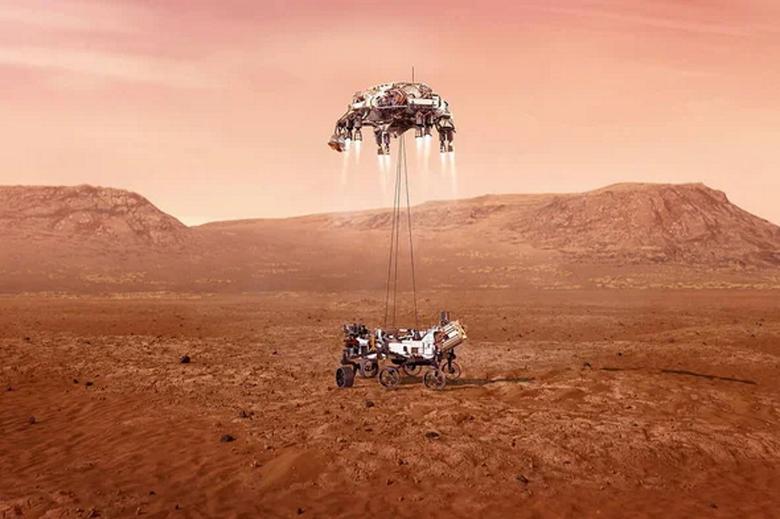
SA - February 18, 2021 - Humanity’s on-again, off-again exploration of Mars has lived through its latest make-or-break moment, and scientists around the world are breathing sighs of relief.
Shortly after 3:44 P.M. Eastern time today, a visitor from Earth fell from a clear, cold Martian sky into a 3.5-billion-year old, 50-kilometer-wide bowl of rock, dust and volcanic ash called Jezero Crater that once held a large lake. Seven minutes earlier, it had touched the top of the planet’s atmosphere at nearly 20,000 kilometers per hour, bleeding off most of its speed through friction, protected from the resulting fireball by a heat shield. A supersonic parachute the size of a Little League baseball field unfurled to slow it further, followed by a final computer-piloted descent on a robotic jetpack called a sky crane, which used a detachable tether to gently lower the visitor to rest upon the crater floor. Far overhead, orbital spacecraft monitored its progress, awaiting the first signals confirming its successful landing, which, beamed Earthward at the speed of light, would arrive at our planet some 11 minutes later.
At long last, NASA’s Mars Perseverance Rover has arrived. Conceived a decade ago and distilled from the dreams of generations of scientists, the SUV-sized, nuclear-fueled rover launched in July 2020, months into a world-transforming pandemic, traveling nearly a half billion kilometers in seven months and surviving a high-tension seven-minute planetfall from space to reach Jezero Crater—where its real hard work will now begin.
Perseverance (or even just “Percy,” for short) is meant to trundle across the terrain for at least a Martian year (two Earth years), following an ambitious to-do list. Explore the environment with rock-vaporizing lasers and ground-penetrating radar, and snap high-resolution panoramas, 3-D stereograms and microscopic close-ups with a suite of sophisticated cameras? Check. Listen to Martian soundscapes, and create weather reports with onboard sensors? Check. Test a device for manufacturing oxygen from the suffocatingly thin air, and launch Ingenuity, a first-of-its-kind four-bladed Marscopter on sorties through those alien skies? Check.
According to Matt Wallace, the project’s deputy project manager at NASA’s Jet Propulsion Laboratory (JPL) and a veteran of all previous Mars rover missions, those latter two tasks and Perseverance’s overall complexity make it “the first one I think of as a human precursor mission.” Scaled up, its oxygen-producing experiment, MOXIE, could provide breathable air and rocket fuel for future astronauts, who could also use more advanced Marscopters to scout out their surroundings.
But, truth be told, all of that is secondary or supplemental to Perseverance’s true reason for being, which is to determine if life ever existed on Mars—and if it ever will.
PERSEVERANCE’S QUEST
“This rover is, at its heart, a robotic geologist and a mobile astrobiologist,” said Lori Glaze, head of NASA’s planetary science division, during a public presentation on Wednesday. “We’re really going after the ability to identify which rocks might be most likely to have preserved the organic fingerprints of life in the past.”
Since the dawn of the space age, the Red Planet has been the most prized target for astrobiological studies, being the closest remotely Earth-like body in the solar system. Although it is presently a cold, hostile desert of a world, billions of years ago it was warmer and wetter—presumably a perfectly fine place for the basics of biology to arise. But somehow, long ago the paths of Mars and Earth diverged, leaving only one planet teeming with life.
Seeing no sign of ancient life on Mars would bolster the case that Earth is indeed rather special, suggesting that despite almost identical initial conditions no wee beasties ever managed to emerge on our sister world. In contrast, finding an independent origin of life on Mars would be potent evidence for the mind-boggling notion that the universe is in some sense built for biology’s blossoming. And while most scientists suspect fossilized microbes to be the most advanced organisms we could discover at the Red Planet, any extant life there—even if single-celled—would spur some to call for a planetary quarantine, to leave Mars to the Martians. A seemingly sterile planet would be, in some respects, the most promising scenario for eventual human exploration and even settlement there.
Perseverance promises to bring us closer to answers for these interlinked mysteries than any other mission in history. Not the least because of its landing site, Jezero Crater, which harbors one of the planet’s largest ancient lake-and-delta systems and is filled with sediments (and, just maybe, microfossils) washed in from the surrounding watershed.
Additionally, Jezero is sandwiched in space and time between two formative occurrences in Mars’s history. It lies within Syrtis Major, a volcanic complex that formed about 3.8 billion years ago, which itself sits adjacent to the Isidis Planitia basin, a gargantuan impact crater that formed about a hundred million years before Syrtis’s first eruptions. The site “is bookended by these major planetary events… we see their influence in the rocks around Jezero,” said Katy Stack Morgan, Perseverance’s deputy project scientist at JPL. At Jezero, she said, “we have this window into early solar system evolution, and the period of time when life was emerging on Earth and might have been emerging on Mars as well.”
SAMPLING ON THE SHOULDERS OF GIANTS
Of the nearly 50 spacecraft that have been sent to Mars since the 1960s, to date only five—all from NASA, and including Perseverance—have successfully traveled across the surface (China’s Tianwen-1 lander, slated to touch down in May of this year with a rover of its own, seeks to be the sixth). First came a tiny pathfinder, Sojourner, that in 1997 showed roving was possible. Next were the twin Mars Exploration Rovers, Spirit and Opportunity, that arrived in 2004 to “follow the water” and establish the local abundance of life’s liquescent cornerstone. Those were followed by Perseverance’s near-clone and precursor, Curiosity, which reached the planet in 2012 to perform still-ongoing investigations of its habitability. None, however, came anywhere close to doing what many Earthbound experts believe to be the most crucial step in Mars exploration: Bringing modest, pristine pieces of the planet back to Earth, where researchers can study them for signs of biology using laboratory equipment that cannot fit into any conceivable rover.
-----
Earlier:
